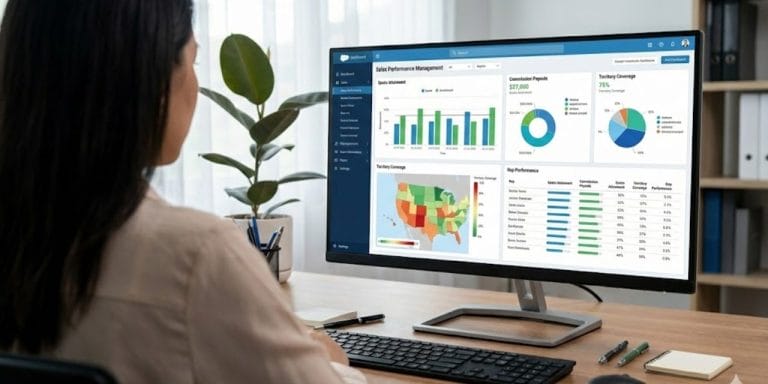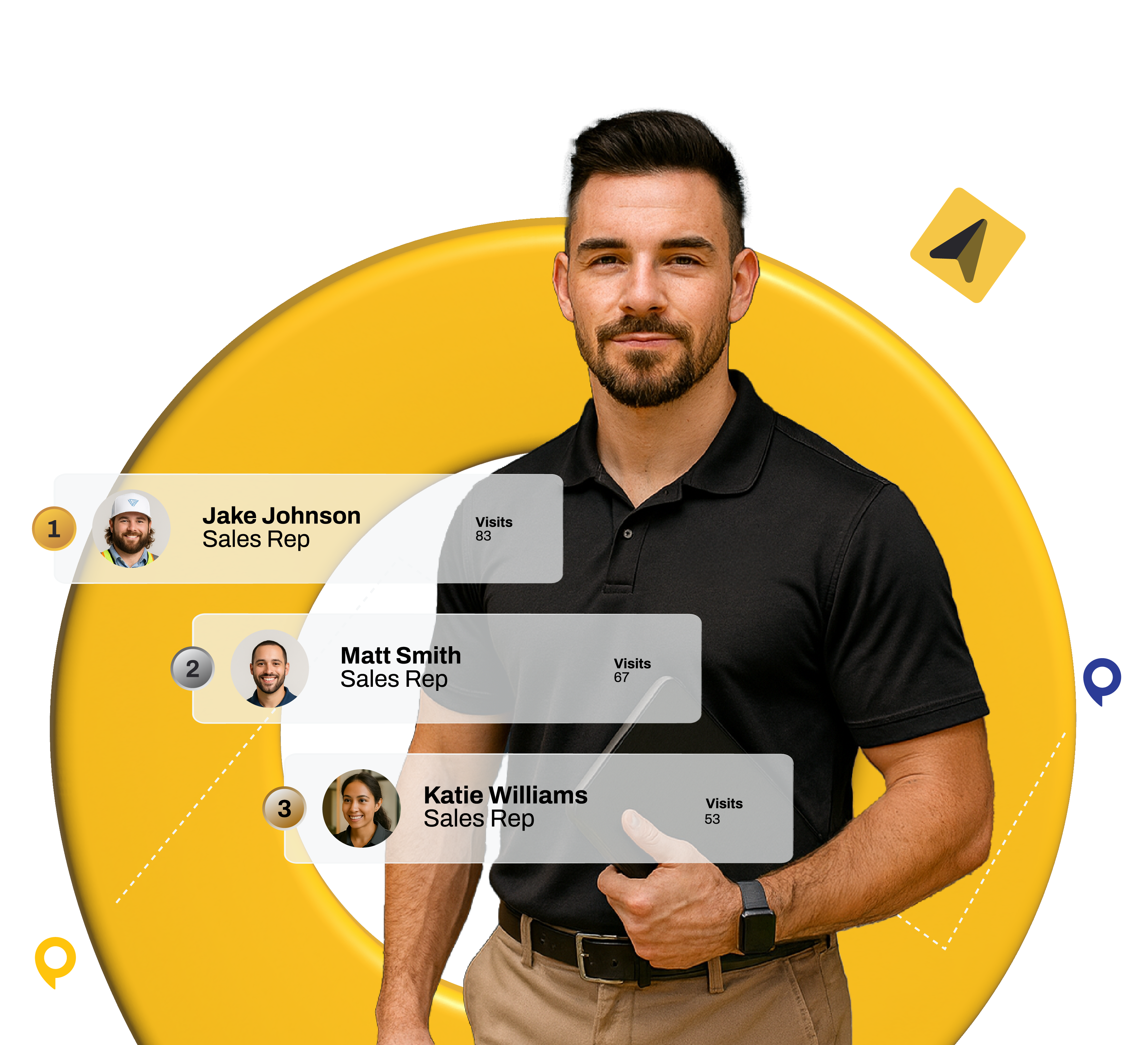Imagine walking into your next sales meeting and the prospect already knows your name, your expertise, and sees you as a trusted expert. That’s the power of social selling for outside sales pros. Today, building relationships starts long before the first handshake – often with a thoughtful comment, a shared article, or a personalized message on LinkedIn.
But social selling isn’t just about collecting digital connections or broadcasting generic updates. It’s about using social platforms as a toolkit for meaningful research, authentic engagement, and credible follow-up-before and after you meet face-to-face.
In this article, you’ll discover six actionable strategies to help you blend in-person skills with online savvy. Here’s what we’ll cover:
- Research Decision-Makers on LinkedIn Before Meetings
- Engage Prospects with Personalized Outreach
- Nurture Relationships After Face-to-Face Interactions
- Share Industry-Relevant Content to Establish Thought Leadership
- Balance Personal Branding with Corporate Messaging
- Integrate Social Selling Tools into Your Field Sales Workflow
Let’s explore how these strategies can help you build stronger relationships and drive better results in the field.
1. Research Decision-Makers on LinkedIn Before Meetings
In B2B sales prospecting, preparation is everything. Before heading out to meet a prospect, use LinkedIn’s advanced search and filters to identify key decision-makers and influencers within your target account.
LinkedIn Sales Navigator can help you dig deeper, revealing company updates, recent job changes, and mutual connections. Studying their profiles for shared interests, recent posts, and group memberships allows you to personalize your approach and demonstrate genuine interest in their business.
Actionable Steps:
- Use LinkedIn’s advanced search and filters to identify decision-makers and influencers within your target accounts.
- Leverage Sales Navigator for deeper insights such as company updates, recent job changes, and mutual connections.
- Review profiles for shared interests, recent activity, and group memberships to personalize your approach.
- Check how active your prospects are on LinkedIn; focus on those who post or engage regularly.
- Pull up CRM data to supplement your research and tailor your outreach.
What to Avoid:
- Don’t rely on a barebones or generic LinkedIn profile; make sure your own profile is complete and authentic.
- Avoid generic connection requests-never send the default message.
- Don’t treat social selling as traditional cold outreach; avoid bombarding prospects with sales pitches right away.
- Don’t skip the research step. Lack of personalization is a major turnoff.
2. Engage Prospects with Personalized Outreach
First impressions matter, even online. Instead of sending generic connection requests, craft personalized messages that reference mutual connections, recent company news, or shared interests. Engage with your prospects’ content – like, comment, or share their posts to show you’re paying attention.
This thoughtful engagement helps you warm up cold contacts and ensures you’re a familiar, credible presence before you ever meet in person.
Actionable Steps:
- Craft personalized connection requests referencing mutual connections, recent posts, or shared interests.
- Engage with prospects’ content by liking, commenting, or sharing with thoughtful insights.
- Start or join conversations on posts relevant to your prospects’ interests or industry.
- Tag relevant colleagues or industry experts in comment threads to add value and foster discussion.
- Keep your messages concise, friendly, and focused on providing value rather than pitching.
- Use AI-powered tools or social listening to identify the best moments to reach out.
What to Avoid:
- Don’t send mass, generic InMails or connection requests.
- Avoid using a stiff, overly formal tone; be approachable and relatable.
- Don’t immediately push for a meeting or sale in your first message.
- Never ignore responses-always follow up to maintain momentum.
- Don’t over-automate; B2B buyers can spot a canned message instantly.
3. Nurture Relationships After Face-to-Face Interactions
The relationship-building doesn’t end after the meeting. Send a personalized follow-up on LinkedIn, referencing your conversation and offering a helpful article or resource.
Congratulate your prospect on professional milestones or comment on their recent achievements.
Set up alerts for when your prospect posts or is mentioned in the news, and use a CRM to track interactions and schedule timely, relevant follow-ups. Consistent, authentic engagement keeps you top-of-mind and builds trust over time.
Actionable Steps:
- Send a personalized follow-up message on LinkedIn referencing your recent conversation.
- Share relevant articles, resources, or event highlights that connect to your discussion.
- Congratulate prospects on professional milestones or comment on their achievements.
- Use social listening tools to set alerts for when your prospect posts or is mentioned in the news.
- Track all interactions in your CRM and schedule timely, relevant follow-ups.
- Spend at least 30 minutes per day on social nurturing and engagement.
What to Avoid:
- Don’t delay your follow-up-reach out within 48–72 hours after the meeting for maximum impact.
- Avoid generic, copy-paste follow-up messages; always tailor your outreach.
- Don’t let the relationship go cold after one interaction-consistency is key.
- Don’t ignore feedback or questions from prospects on social channels.
- Don’t treat social engagement as a one-time task; nurturing is ongoing.
4. Share Industry-Relevant Content to Establish Thought Leadership
Decision-makers are influenced by thought leadership and educational content, not just product-focused posts. Outside sales reps who share valuable, industry-specific content position themselves as trusted advisors.
Post about emerging trends, regulatory changes, or new technologies affecting your prospects. Highlight case studies and success stories that show how your company solves real-world challenges. Mix in your own perspectives and commentary to add a personal touch. Align your content with both your personal brand and your company’s messaging, and use visuals or infographics to boost engagement.
Actionable Steps:
- Post about industry trends, regulatory changes, or new technologies that matter to your audience.
- Share case studies, customer testimonials, and success stories to build credibility.
- Offer original insights or commentary to demonstrate your expertise.
- Curate and share high-quality content from respected sources, adding your own perspective.
- Use visuals, infographics, and short videos to increase engagement and reach.
- Aim for consistency-even one thoughtful post per week can build traction.
What to Avoid:
- Don’t use your content feed as a sales platform-focus on value, not pitching products.
- Avoid sharing irrelevant or off-topic content that doesn’t resonate with your audience.
- Don’t imitate others or rely solely on company posts; add your unique voice.
- Don’t post infrequently or inconsistently-regular activity is essential.
5. Balance Personal Branding with Corporate Messaging
Trust is built on authenticity. B2B buyers want to connect with real people, not faceless brands. Showcase your expertise and personality while aligning with your company’s values and mission. Share personal stories about helping clients, but tie them back to how your company delivers value. Amplify company campaigns and product launches through your own channels, and always use your real voice.
This balance helps you build credibility as both an individual and a representative of your organization.
Actionable Steps:
- Align your values and expertise with your company’s mission while staying authentic.
- Maintain a professional online presence that highlights your individual strengths and supports company goals.
- Share personal stories and experiences that reinforce your expertise and the company’s value proposition.
- Communicate consistently across personal and professional platforms.
- Collaborate with your company’s marketing team to ensure messaging is aligned.
- Participate in ongoing training to keep your brand and skills sharp.
What to Avoid:
- Don’t overshadow your company’s brand with your personal agenda.
- Avoid sharing personal opinions that conflict with your company’s values or policies.
- Don’t be inconsistent in your messaging or tone across platforms.
- Don’t neglect your digital footprint. Be mindful of what you post and how it reflects on both you and your employer.
6. Integrate Social Selling Tools into Your Field Sales Workflow
The right tools can make social selling seamless. Use platforms like LinkedIn and Sales Navigator for prospecting and engagement. Mobile-first CRMs and territory management tools like Spotio help you stay organized on the go. Integrate social CRM platforms to connect your social activity with your sales pipeline, and leverage employee advocacy programs to share approved company content.
Schedule regular time for social prospecting, set alerts for prospect activity, and use analytics to track what’s working. AI-powered analytics and social listening tools can now help you identify buying signals, personalize outreach, and optimize your strategy.
Actionable Steps:
- Use LinkedIn and Sales Navigator for prospecting, research, and engagement.
- Adopt mobile-first CRMs and territory management tools to stay organized on the go.
- Integrate social CRM platforms to connect social activity with your sales pipeline.
- Leverage employee advocacy programs to share approved company content while maintaining your voice.
- Schedule regular time for social prospecting, set alerts for prospect activity, and use analytics to optimize your approach.
- Use AI-driven tools to identify buying signals and personalize your outreach.
What to Avoid:
- Don’t rely on a single platform; diversify your social selling efforts based on where your prospects are active.
- Avoid neglecting the integration between your social and sales tools. Siloed data limits effectiveness.
- Don’t overlook analytics; failing to track what’s working means missing opportunities to improve.
- Don’t automate everything-personal touch is still crucial, even with the best tools.
Turn Connections into Results
Social selling is a powerful way to complement your in-person efforts, helping you build deeper relationships and drive better results in the field. According to Revenue.io, 78% of salespeople who use social selling outsell their peers, and sales teams engaged in social selling generate 45% more opportunities.
By researching prospects, engaging authentically, nurturing relationships, sharing valuable content, balancing your brand, and using the right tools, you can make every meeting more impactful-and every connection more meaningful.
Remember, the landscape is always evolving. Invest in ongoing training, stay curious about new tools, and keep your approach human and value-driven. That’s how today’s B2B field sales reps turn connections into real-world wins.
Looking for more tips? Explore our guides on B2B prospecting, CRM tools for sales, and B2B field sales engagement tools for deeper insights!




